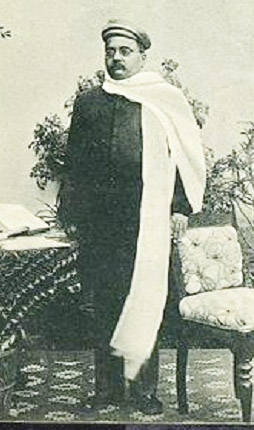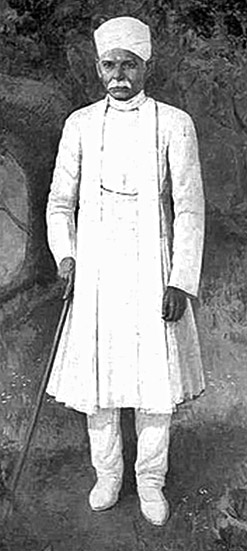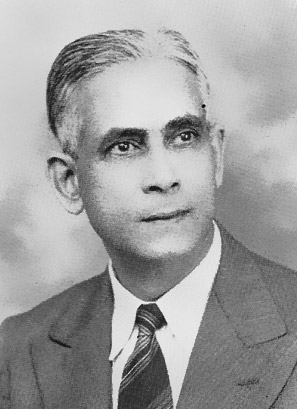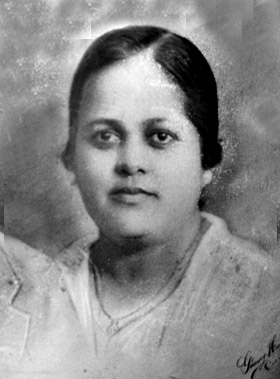March 7, 2018 issue
FEATURE

Abolition of Indentureship. Defence of India Act 1917
The abolition of indentureship answered a mother’s cries to end the suffering of her children taken very far away. No mother can bear this. Yet, the suffering propelled the children to put behind them those days of maltreatment, to make good and to bring a tear of joy and pride to their mother.
We remember with prayers of deep reverence the ancestral motherland and its leaders who fought for the abolition of indentureship. Dissatisfaction was rife throughout India over the ill treatment of Indians abroad. Leaders in India, then a colony like British Guiana, had no voice in the administration of the country. When The Government of India Act in 1910 secured for them representation on the Imperial Legislative Council, they at once protested against the humiliating treatment of their fellows abroad.
The eminent freedom fighter Gokhale moved a resolution calling for the abolition of the indenture system in Natal. Professor Gopal Krishna Gokhale, college Principal, a leader of socio-political reforms, was a forerunner of the Indian Independence Movement, he campaigned for self-rule. He was founder of the influential ‘Servants of India Society’ dedicated to train Indians to uproot social evils in their country. In 1901, he became a member of the Imperial Council of the Governor General of India. Gokhale dedicated his life to the advancement of the nation's welfare. In 1905, he was sent on a special mission to England to explain India's constitutional demands among the British leaders.
In 1912 Gokhale moved another resolution urging the total abolition of the entire indenture system. That was not accepted by the Government but when C.F. Andrews and W.W. Pearson visited Fiji and returned with evidence of grave abuses there, the Government was convinced about the case for abolition. The Reverend C.F. Andrews was a Church of England priest, a Christian missionary, educator and social reformer. He became a close friend of Mahatma Gandhi and identified with the cause of India's independence.

Pt Malaviya’s Bill was passed and became the Abolition of Indenture Act 1916. People of India rejoiced, but again there was disappointment. They heard the system was to continue for another five years. Indians took this up as a primary national concern; there was unrest throughout India at the failure of the Government to end emigration forthwith. Women of India, stirred to action and for the first time on record, went on a deputation to the Viceroy asking for the indenture system to be abolished without further delay. The Viceroy, issued a rule in 1917 under the Defence of India Act, ending the system.
British Guiana. Imperial power and Slavery
In British Guiana, the emancipation of slaves led to a serious shortage of labour in the sugar plantations. Sugar planters, until then had depended solely on slave labour. A crisis loomed as estate owners faced the prospect of losing their lucrative income from sugar, a special delicacy of the well-to-do in Europe. This forced the British government to set up the indenture labour system to bring labour from India.
Some 239,000 came to settle in British Guiana from 1838 to 1917. From humble circumstances, from villages in North India and Madras, the indentured immigrants came on a contract to work in British Guiana for 5 years, after which they would be taken back to India.
In the early years, they eked a living under the excesses of oppression and criminality. Many scholarly works detail the suffering of our ancestors, how they were ‘recruited’, the hazards of a long sea journey, not knowing where they would end up, abuses on the journey and the conditions they lived and worked in, regarded as a new system of slavery.
They lived a slave-like existence, at best like servants to colonial masters. They lived in inhuman conditions, poor housing and poor sanitation. Many horrors occurred, in the early years: flogging and imprisonment etc. See Dwarka Nath’s ‘History of Indians in Guyana’.
Despite it all the immigrants survived, broke out of the shackles of plantation life and prospered. Not all survived. We spare a moment to honour those thousands who did not make it. Some died while at sea, and many succumbed before they could realise their hopes and ambitions. Tested in the baptism of fire they survived stronger. We are of that tough breed.

Progress
At the end of their contract period of indentureship, our ancestors grasped opportunities to better their life. They saved, bought land, started businesses or educated themselves and never looked back.
Among many achievements, one great moment was when Dr Cheddi Jagan, the son of one arrivee became Chief Minister, later Premier of British Guiana and later still President of Guyana. The grandson of an arrivee became Secretary General of the Commonwealth.
I am indebted to Professor Clem Seecharan and Dwarka Nath, among others for scholarly chronicles of Indian achievement. The extracts below are from three books:
Clem’s: ‘Tiger in the Stars’ –The Anatomy of Indian Achievement in British Guiana 1919-29, published by MacMillan Education Ltd., 1997 and ‘Mother India’s Shadow over Eldorado’ –‘Indo-Guyanese Politics and Identity’ 1890s-1930s, ’ Publisher: Ian Randle Publishers, Jamaica, 2011.
Dwarka Nath’s ‘A History of Indians in Guyana’ published by himself.
We all know about our ancestors and many who battled through countless obstacles, worked hard, suffered, gave their blood, toil, sweat and tears to get where they are today. Clem Seecharan writes in ‘Tiger in the Stars’, ‘To record the achievements of many of these Indian families in British Guiana would require a special study.’
Scholars would make a sterling contribution to our history by recording these stories of achievement which should inspire our young and many others.
The rice industry was on it knees when Indians came to British Guiana. They spearheaded development of the industry, made it the second largest in the country, next to sugar. Acreage under rice rose from 6700 in 1898 to 58,000 in1922. Production rose from 4,000 tons to 36,000 tons. These are approximate figures.
Here is a random collection of names of early settlers and their achievements after completing their term of indentureship.
Baburam Sawh indentured to Pln Golden Fleece, Essequibo, started a business. Son Parbhu Sawh developed it to be the first Indian business in the capital of Georgetown. In 1919, Prabhu with JA Luckhoo and Dr Wharton were selected by the British Government to form a deputation to India to negotiate the terms and conditions for new immigrants to the colony. He met Mahatma Gandhi in Amritsar and again at his home in Ahmedabad.
Jagdeo of Mahaicony Creek, son of immigrant. In 1916 he imported a Caterpillar tractor, was the first man in the colony to use machinery to cultivate rice; had over 3000 acres under cultivation. He constructed a canal between Mahaicony and Abary Creeks, and had a huge pump to irrigate his fields and those of neighbours.
1859. Lokhooa, 7, indentured to Pln Albion, later known as Moses Luckhoo, became an interpreter at magistrates courts in Berbice, opened a store and became one of the wealthiest merchants in New Amsterdam. Son Joseph Alexander, worked in the store, studied law, became the first Indian barrister in the colony. Later JA became Chief Justice of Guyana. So did his son, Sir JA, Junior. EA Luckhoo, another son of Moses, became the first Indian solicitor in the colony. He is the father of Sir Edward, Lloyd, Ena, and Sir Lionel.
JA Luckhoo, Dr H. Wharton, and Parbhu Sawh, - whose parents were indentured labourers – were selected on recommendation by Lord Sinha, Under Secretary of State for India, to represent the British Guiana local Indian community, in a delegation to India. Luckhoo was then President and Wharton was Honorary President of the BG East Indian Association.
1859. Ruhoman 11, with Lokhooa indentured to Pln Albion, became a sicknurse and dispenser, chemist and druggist and a dentist. He was the father of intellectuals Joseph and Peter two distinguished writers. Joseph was the doyen in his day of BG’s journalists. He was inspired by his pride in India’s intellectual achievements.
Peter was widely known in the 30s for his column ‘Indian Intelligence’ in the Chronicle, under pseudonym ‘The Pandit’. Their focus was shaping of Indian identity, pride in the legacy of India and education. They sounded a clarion call for Indians to embrace opportunities to play their full part in every sphere of life in BG.
1869. Sheotahal, aged 21, indentured to Pln. Port Mourant, bought property at Cromarty with savings, reared cattle, sheep and goats. Through hard work and frugality, he saved and bought Friendship, Wellington Park, Tarlogie, other estates on the Corentyne. At his death he was reported to be wealthiest East Indian in the colony.
1873. Hanoman was indentured in 1873 to Plantation Everton. He worked hard on several jobs, and with savings, opened a shop at Cumberland Village. His success enabled him to buy two estates, on East Coast Berbice, plus a cattle farm. He prospered and so did his sons and daughters who became successful business people and pillars of the Berbice community. Their children, grandchildren and great grand children are all accomplished business people and professionals.
1884. Haji McDoom, aged 21, after contract he elected to take 10 acres of land at Peters Hall. Eldest son CA McDoom, was a distinguished merchant, sawmiller, landed proprietor, cattle rancher, rice farmer and legislator. In 1921 they bought Rome, part of Pln Houston, and named it McDoom village. They built the first concrete mosque in the colony.
1901. The parents of Dr Cheddi Jagan, were children when they arrived in British Guiana with their mothers indentured to Plns Albion and Port Mourant. Father became a cane cutter and mother worked in moulding cane plants. Later father became a driver. The parents worked very hard to educate their son and other children to have a better life than theirs.
Gajrajs. HB Gajraj was a clerk in his father’s store in Georgetown. He headed his firm of general merchandise plus distributorship of Austin cars. He contributed greatly to public life. His son RB Gajraj, continued in his father’s footsteps in the business and in public life, for many years as a member of the Legislature and its distinguished Speaker.
J.A. Veerasawmy born in 1891, became the first Indian to represent the colony in an inter-colonial cricket match. An accomplished batsman and medium pace bowler, in London where he studied law, he was in 1911 a

Note: Dr Wharton was Indian. In the early years, for many reasons including language and pronunciation, Indian names were often wrongly spelt or made into English names by non-Indian officers unfamiliar with Indian names when registering birth.
Dr Jung Bahadur Singh, Senior Legislator and Indian Diaspora Leader. Born in 1886, with strong pride in his Hindu heritage, he founded the premier Hindu organisation, the Sanatan Dharma Maha Sabha, In 1931, he became the first Hindu to be elected to the Legislative Council. A member of the Executive Council, Dr Singh, represented British Guiana, in 1947, at the first Caribbean Federation Conference, and in 1953, at the Coronation of Queen Elizabeth II.
Joseph Jaikarran and his brother Robert Jailall. Robert is father of the late Judge PR Jailall. Joseph Jaikarran qualified as a sicknurse and dispenser. In 1936 he opened a drug store at Water Street. His brilliant children and grand children excelled in the professions. There were four Guyana Scholars in the family - sons Samuel 1923, Sydney 1951, grand daughters Pamela 1957 and Kamala 1959. A Guyana scholar is one who has topped the list of all in the country who passed at the pre University examination, which, in the mid 50s, was GCE Advanced level.

Women achievers were no less exemplary: Lilian Das and husband founded Pradasco Cycle store, in Georgetown in 1920. They were agents for big name brands - Humber, Triumph, Hercules. After the death of her husband, Lilian managed the business into the 60s.
Alice Bhagwandai Singh, founded the East Indian Ladies’ Guild, to address Indian concerns, social, cultural and religious. She founded the British Guiana Dramatic Society which for decades, was “a cradle of Indian culture” in British Guiana. A member of the Red Cross, the YWCA and a prison visitor, in 1936 Alice founded the Balak Sahaita Mandalee – a voluntary child-welfare society, which focused on addressing the desperate poverty on sugar estates. She was awarded the MBE.
Gladys Ramsarran (nee Sarran) in 1932 was the first Indian woman in the West Indies to qualify as a lawyer. She married VC Ramsarran, a BG Lawyer. Both moved to settle in Trinidad and were well known as legislators in Trinidad.
Clara Ramdeholl, daughter of New Amsterdam merchant was an iconic figure of triumph and tragedy. She graduated as a lawyer, the second Indo-Guyanese woman to do so. Returning to BG in 1940, on the ship ‘Simon Bolivar’, it was torpedoed by the Germans in the Atlantic. Clara did not survive, her body was not found. The Ramdeholl Memorial Church in the grounds of Berbice High School was built and dedicated to Clara’s memory.
Among many others:
JI Ramphal. Headteacher, Educator, Labour Inspector, the first Indian to teach at Berbice High School. He almost single-handedly, got the Government to withdraw the infamous Swettenham Circular in 1933. It had been introduced in 1902, and it made it legal for Indian parents to keep their daughters away from school, while sending them to work in the sugar cane fields. The repeal of the Circular was a major watershed in the development of the Indo-Guyanese.
Sir Shridath Ramphal. Former Commonwealth Secretary General.
Sir Harry Annamanthado, MD. 1939 Guyana Scholar. Professor of Medicine at UWI.
MM Shahabuddeen QC. LLM. Judge in the International Court of Justice 1988-1997.
Other names from thousands include: Rash Beharry, Resaul Maraj, Haji Ramjohn, Pandits, Meajis, Christian Priests, Ramsaroop Maraj, Rahaman, Kawall, Boodhoo, Flood, Jaundoo, Chinapen, Rohoman, Chandisingh, Latchmansingh etc.